47+ Sample Sales Contracts
-
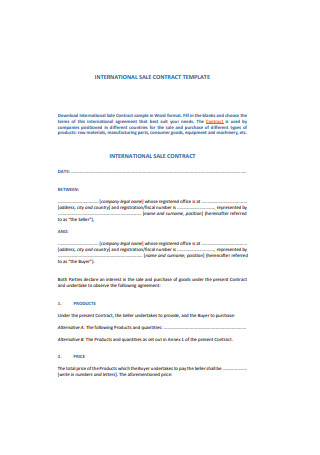
International Sales Contract Sample
-
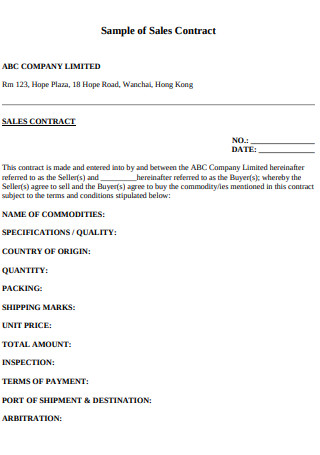
Sample of Sales Contract
-
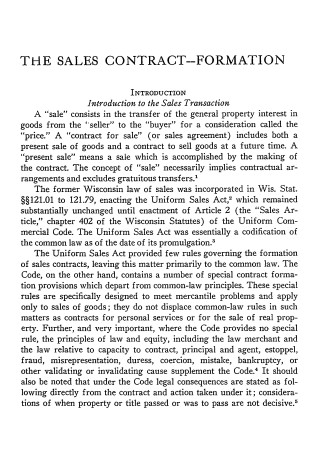
Sales Contract Sample
-
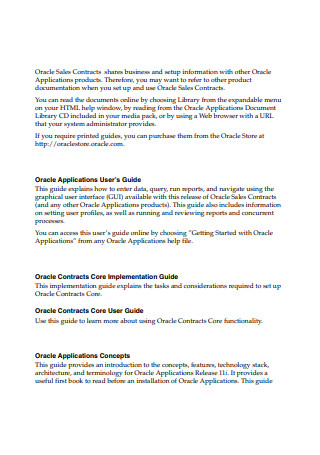
Oracle Sales Contract Sample
-
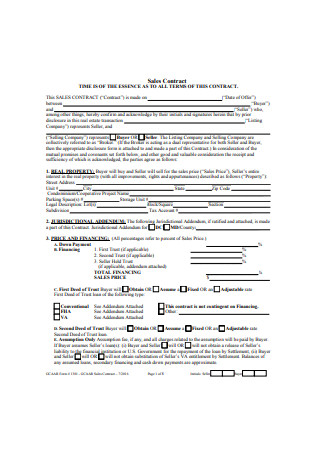
Sales Contract Agreement Example
-
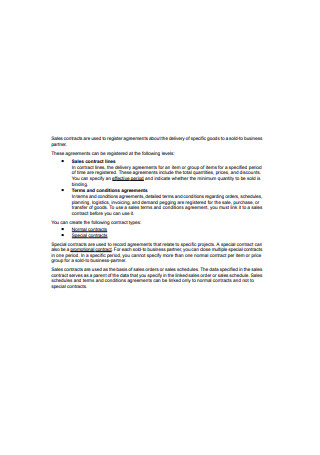
Business Sales Contract Sample
-
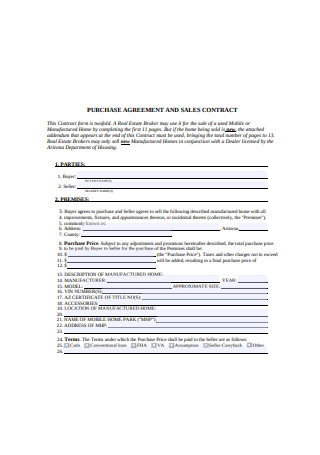
Purchase Agreement and Sales Contract Sample
-
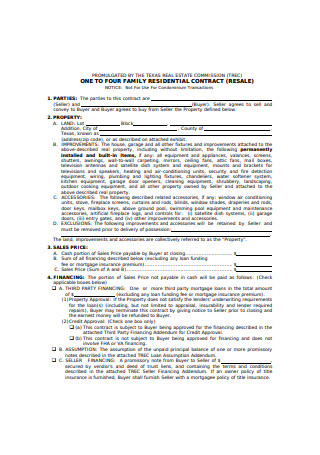
Residential Sales Contract Sample
-

Vegetable Sales Contract Sample
-

Basic Sales Contract Sample
-
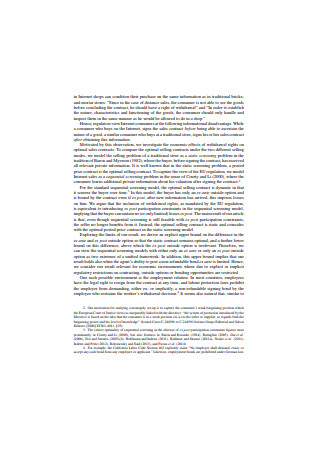
Optimal Sales Contract Sample
-

Sales Contract for Consumer Sample
-
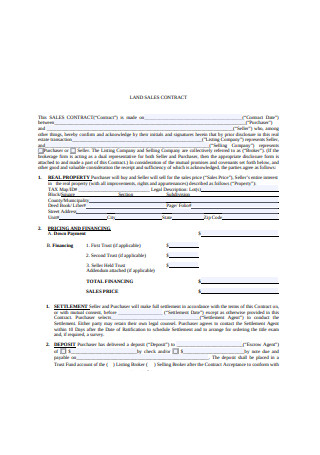
Land Sales Contract Sample
-
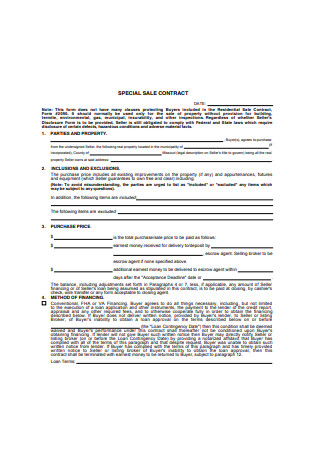
Special Sales Contract Sample
-
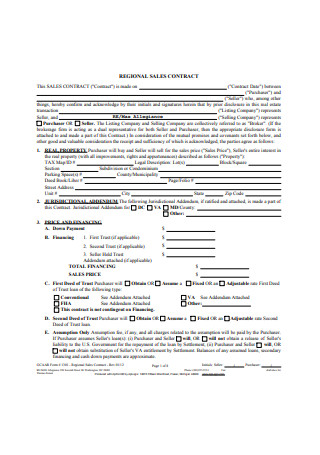
Regional Sales Contract Sample
-
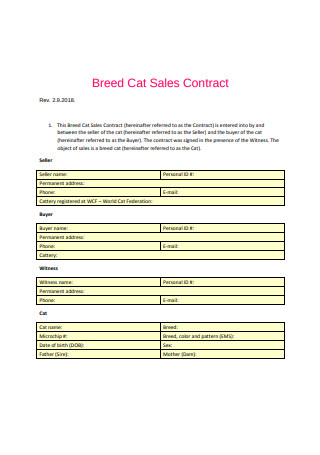
Breed Cat Sales Contract Sample
-
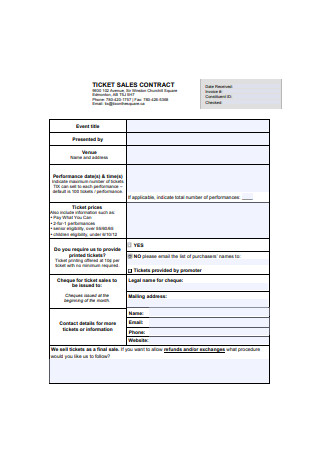
Ticket Sales Contract Sample
-
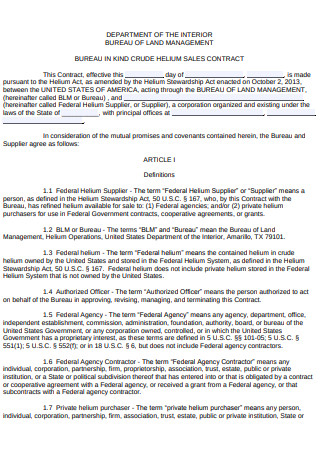
Land Management Sales Contract Sample
-
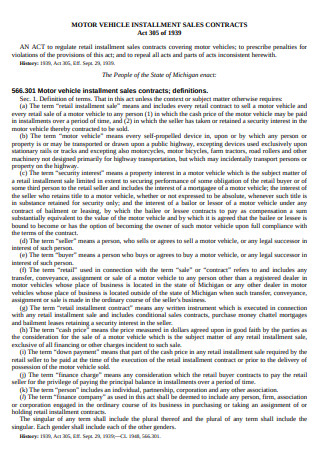
Motor Vehicle Installment Sales Contract
-
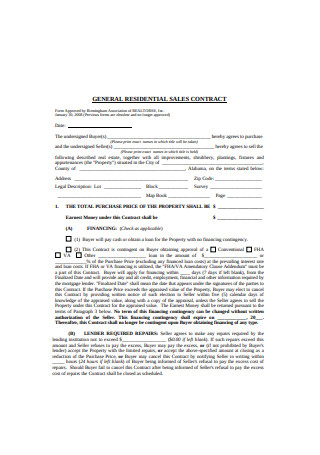
General Residential Sales Contract Sample
-
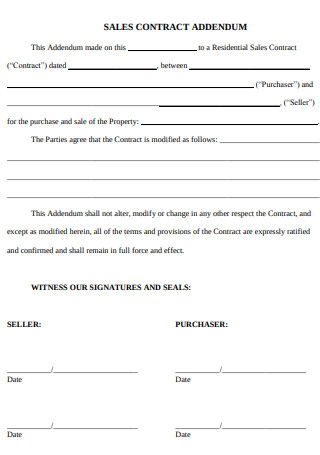
Sales Contract Addendum Sample
-
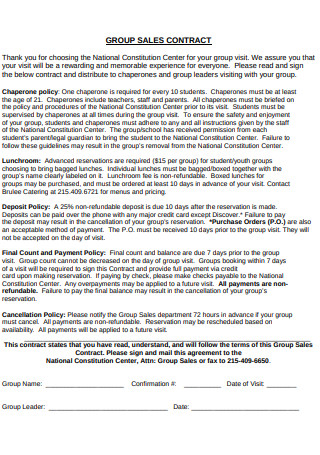
Group Sales Contract Sample
-
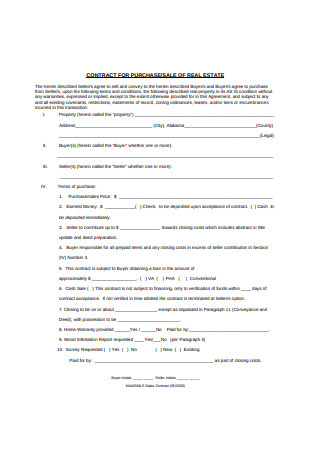
Contract for Sale of Real Estate Sample
-
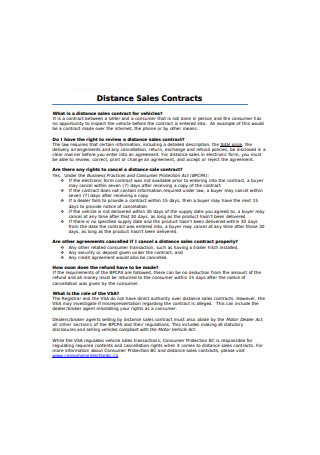
Distance Sales Contract Sample
-
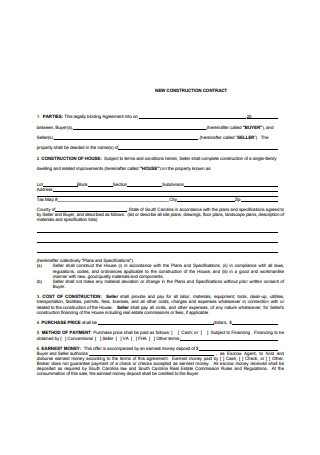
New Construction Sales Contract
-
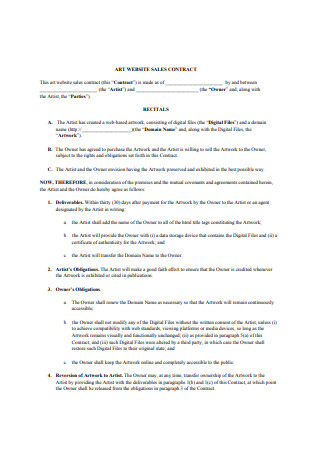
Art Website Sales Contract Sample
-
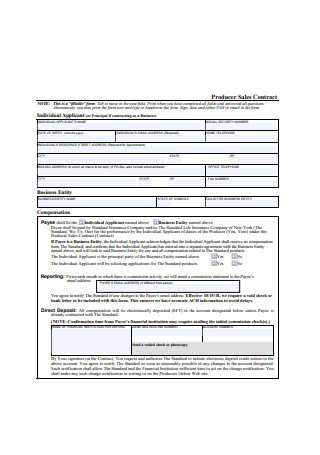
Producer Sales Contract Sample
-
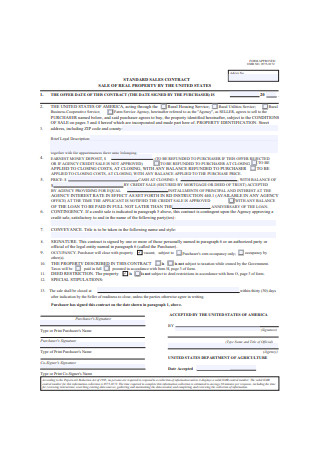
Standard Sales Contract Sample
-
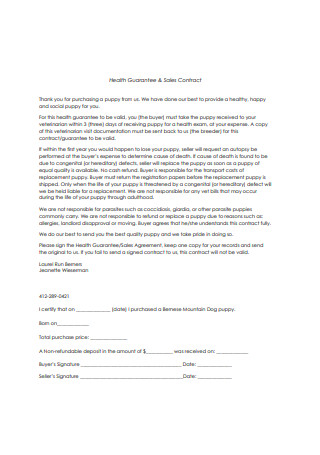
Health Gaurantee and Sales Contract Sample
-
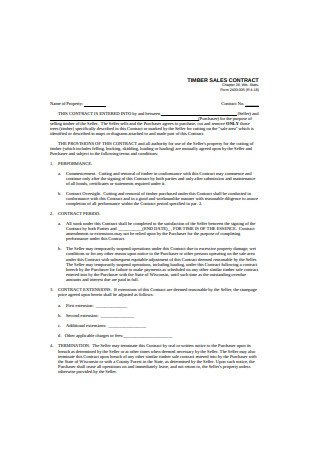
Timber Sales Contract Sample
-
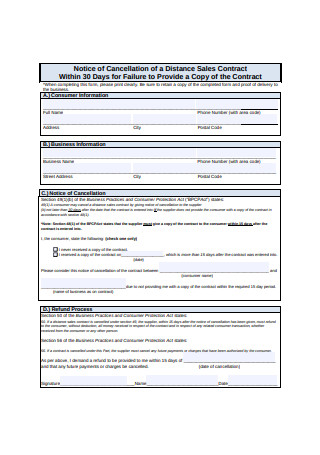
Notice of Cancellation of a Distance Sales Contract
-
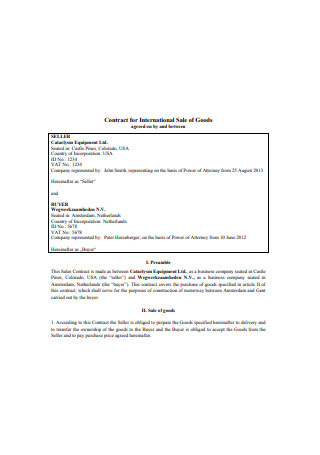
Contract for International Sale of Goods
-
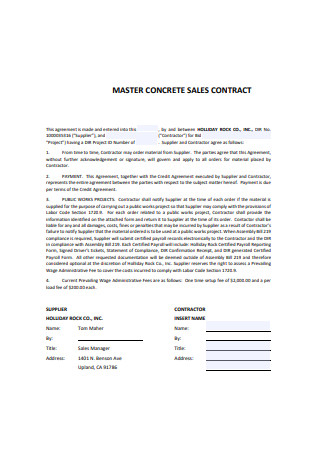
Master Concrete Sales Contract Sample
-
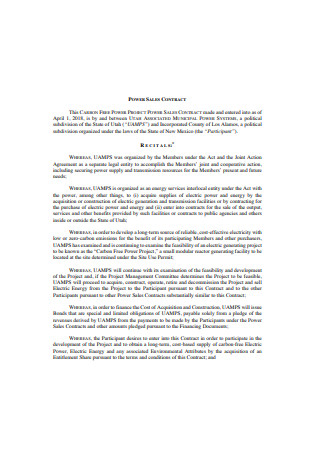
Power Sales Contract Sample
-
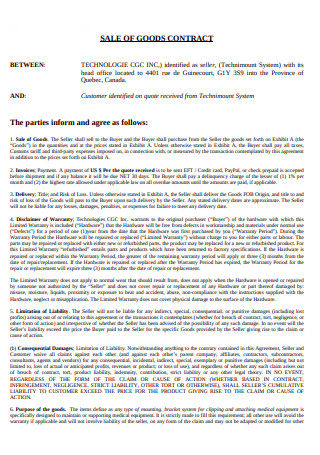
Sale of Goods Contract Sample
-
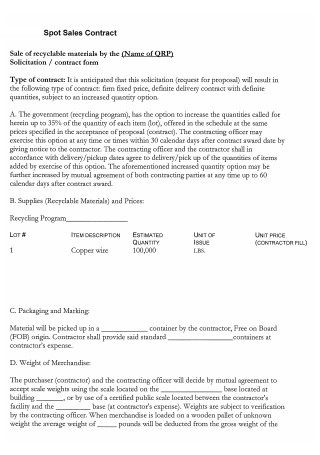
Spot Sales Contract Sample
-
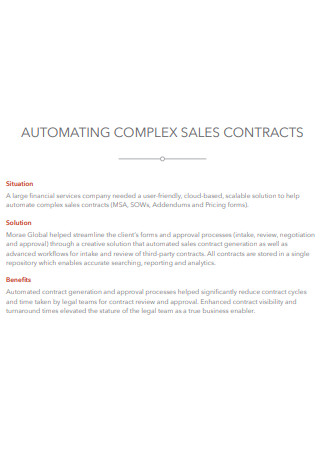
Automating Complex Sales Contract
-
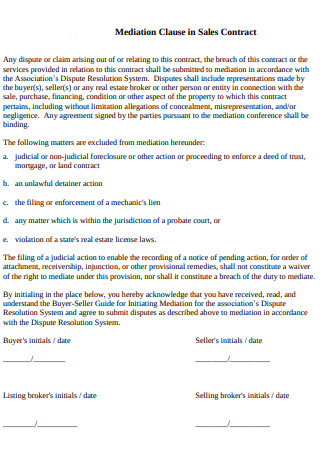
Mediation Clause in Sales Contract
-
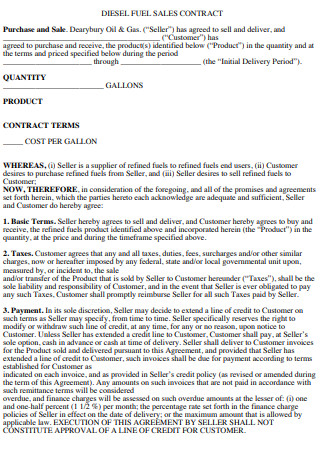
Diesel Fuel Sales Contract
-
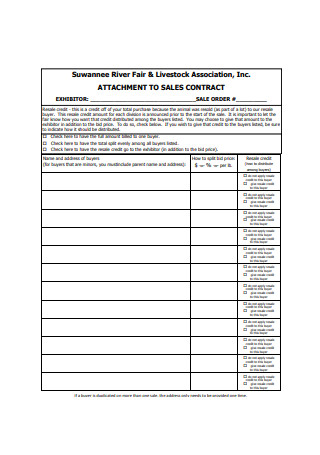
Attachment to Sale Contract Sample
-
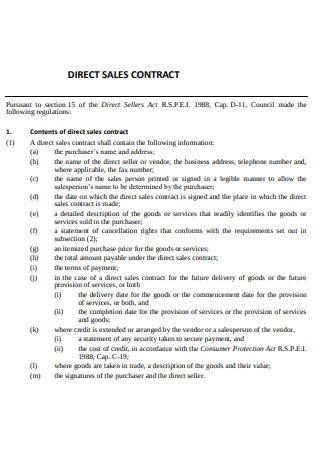
Direct Sales Contract Sample
-
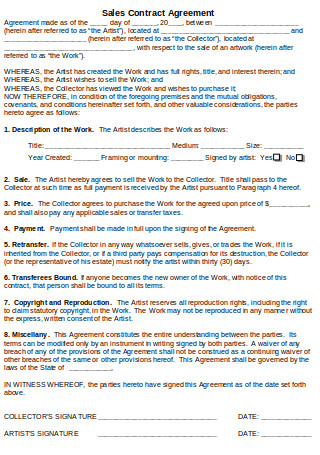
Sample Sales Contract Agreement
-
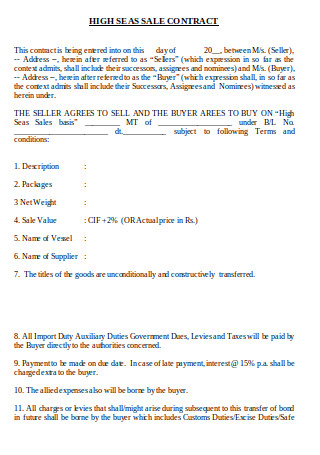
High Seas Sales Contract Sample
-
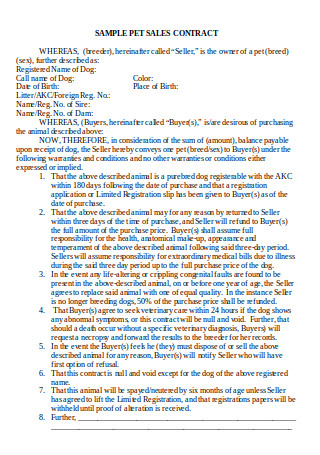
Sample Pet Sales Contract
-
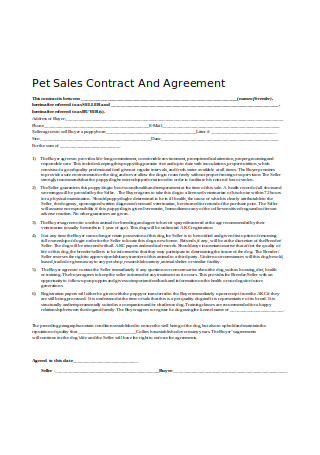
Pet Sales Contract and Agreement
-
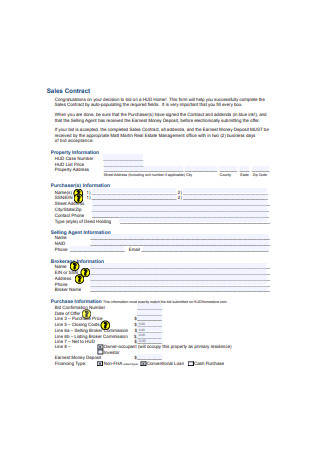
Professional Sales Contract
-
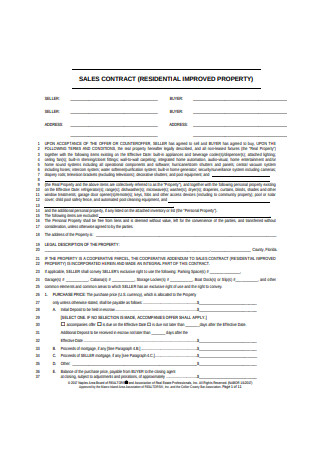
Property Sales Contract Sample
-
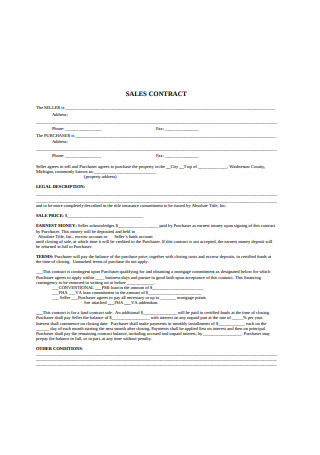
Sales Contract Example
FREE Best Sales Contract s to Download
47+ Sample Sales Contracts
What Is a Sales Contract?
Types of Sales Contract
How to Draft a Sales Contract
The Do’s & Don’ts of a Sales Contract
What Is a Sales Contract?
When a buyer agrees to purchase a particular asset from a seller or vendor for a pre-determined sum of money, then a legally-enforceable sales contract is utilized to enforce this practice of exchange. In various common law jurisdictions, this is governed by statutory law. Details included would be the identification of the specific goods sold, the delivery instructions, the particular inspection period, along with the warranties and how the payment was made by the buyer to the seller.
“Only 39% of salespeople intended to go into sales.” (Source: Research.Hubspot.com )
“85% of companies are using manual processes to manage sales contracts” (Source: Springcm.com)
Types of Sales Contract
When they are written correctly, it is worth recognizing numerous types of sales contracts that can be deemed legally enforceable. These documents are defined in various ways, such as the circumstances of the sale, the type of product purchased, how the payment was made, and more.
How to Draft a Sales Contract
The importance of an enforceable contract simply cannot be understated in this day and age. It is needed not only in the event of litigation but also because it can be used as a means for either party to review the terms that they themselves have agreed upon. Through the list above, you already know that sale contracts tend to vary depending on numerous factors, yet there are still common elements that must be included. Those who wish to draft a sales contract for their own use can refer to the following step-by-step procedure to ensure an easier, quicker, and more efficient experience.
Step 1: Start with the Title and the Introduction
Among the first things to be done when creating your own high-quality contract regardless of its specific type would be to devise a clear title. It should be detailed as far as what the contract’s contents are. From there you can continue by coming up with a few sentences in order to name both the buyer and seller. In the same paragraph, be sure to identify what roles they play in this agreement and state the exact date that this contract was signed by both.
Step 2: Work on the Section that States the Contact Information
You can do this by first listing down the complete names of both the buyer and the seller. Also, include any possible or relevant business affiliations in the event that either party is working or buying on behalf of certain companies, as well as the general nature of the business. From there, proceed to specify the legal address of each party, including which city, state, and the corresponding zip code. Take note of anything unusual, like businesses that have multiple headquarters or if the physical address differs from the mailing address.
Step 3: Write a Description of the Transaction
In this step, proceed to describe the exact goods being sold, along with how it is to be delivered, and the precise date of delivery. Depending on the goods that are sold, you can also include extra information. Among said extra information will include the condition of what is sold, any state of assembly, or the features involved. Those who are selling a product that is out of the ordinary will want to ensure that its unusual characteristics are included in this section of the sales contract.
Step 4: Work on the Section that Contains the Expectations for the Buyer
In this step, it is important to explicitly state the rights that the buyer is entitled towards, along with any obligations that are to be upheld. Be sure to include any payment specifics in addition to the return policies. Should the buyer be legally responsible for the product while it is in transit, then state that in this section. Also, be sure to explain exactly what will happen in the event that the buyer fails or decides not to pay in full. Lastly, include information regarding interest, any temporary credit, and trial periods.
Step 5: Work on the Section that Contains the Expectations for the Seller
Similar to the step above regarding the buyer, this time you need to state all of the rights and obligations of the seller. Indicate when exactly the legal control of what is being sold will shift from the seller to the purchaser. Also, be sure to explain the claims of the seller in regards to the goods. For example, should the seller make the claim that the item is legally registered, then proceed to include it in the seller’s section. Also write down any titles, paperwork, certificates that the seller needs to furnish together with the purchase.
Step 6: Ensure Space for the Attestation Section
The attestation section is the part of the sales contract where both parties are to sign their signatures on. You can draw this up simply by writing the names of the parties involved and the date when the contract is to be signed. Then leave a line that is either above or next to each party’s name.
The Do’s & Don’ts of a Sales Contract
Now that you have a better idea of how a sales contract is drafted, the next logical step is to find ways of making it better and more effective in its purpose. Basically, there are multiple do’s and don’ts that you will want to pay close attention to. As minor as these issues may seem on their own, lumped together they form major pitfalls that can entrap many professionals into tricky situations that are otherwise perfectly avoidable. Take note of the following suggestions for an improved experience with sales contracts.
The Do’s
Do include as much relevant information as possible
It certainly pays to include as much relevant information as you possibly can in any sales contract you find yourself involved with. Your specific situation will benefit from this because it makes it easier to come up with a contract that will work towards the best interests of both parties. An example would be if the product being sold is unusual in a way that you are only looking for certain parts of a machine as opposed to the entire machine itself. By including that, you allow the contract to be written in such a way that will accommodate your needs while informing the other party of it in the most appropriate of ways.
Do try to be on the lookout for any ambiguity in the contract
There are going to be multiple scenarios in the future for those who deal with all sorts of contracts where ambiguous situations will arise. The reason for this is because of how contract language easily gives rise to ambiguity, which is unfortunate if you take time to consider just how much potential this has for disputes. The only way for you to successfully and consistently avoid ambiguity is to study it – those who do not know how, where, or what to even look for are going to miss it entirely. Even simple words like ‘and’ and ‘or’ can easily contribute to ambiguity. You and any partners you may have would do well to watch out for that as well.
Do try to use other terms in place of ‘material’
In itself, there may be nothing wrong with using the word ‘material’ here and there. However, you may want to reconsider what it actually means for your sales contract. This is a rather tricky word because it is both vague and can lead you towards highly ambiguous situations that could make things unnecessarily complex for one or both parties involved. Instead, minimize its use whenever possible and try to be as specific as you can in referring to any objects that you might normally just refer to as ‘materials.’
Do number your paragraphs
Numbering your paragraphs is a great way to keep your contract more organized. In the event that one party or more needs to review the document for one reason or another, then they will no longer have to waste any of their valuable time re-reading everything from the beginning to end. All they would need to do by then is to refer to the number of the section that they are looking for.
Do use easy-to-understand and modern language
It would not do for any sales contract to be difficult for people to understand or keep up with. As tempting as it may be to use certain phrases, archaic terms no longer have a place in modern language for a reason. You would find yourself in a much better position if you leave those behind and utilize easy-to-understand, modern language instead. Doing so will help prevent any misunderstandings that could potentially lead to litigation. People who understand the contract that they are signing will then have an easier time upholding their expected obligations to the other party.
The Don’ts
Don’t overuse the word ‘shall’
Many contract drafters have the tendency to use the word shall as if they are under the impression that provisions won’t be legally enforceable without it. As a matter of fact, it is generally better for contracts to only feature the word shall if there is a section where an obligation needs to be created. In other words, only for those times when you need to convey a meaning of ‘has a duty to.’ The overuse of the word will muddy the distinction between the many categories of contract language, making it difficult for people to read at best and create unnecessary disputes at worst.
Don’t overuse jargon
This is something that continues to go hand in hand with the overall theme of making your sales contract easy for all parties to understand. If you have an idea to use terms that do not add anything to the document except make it sound ‘smarter’ or pompous, then it would probably be best to leave it out. That is particularly good advice if you do not even know or completely understand what the term even means. Chances are, the other parties don’t either. Better to be clear and try to sound smarter than you actually are.
Don’t use overly long or overly complex sentences
Make the contents of your contract easy to digest. This is in the interest of making it crystal clear for everyone involved. Rather than write a long, winding sentence, perhaps it would be better to cut it in half if you think it will make your point that much easier for the reader to understand. Contracts can be difficult enough for people to deal with without having to read complex sentences.
Don’t include anything that is irrelevant
Many who have not had any significant experiences with contracts think of such documents as needlessly complicated. It can be tough to refute that opinion if people continue to include meaningless words or any kind of content that is irrelevant to what the contract is about. Both will only add to the word count and make the contract even more confusing. A tip would be to avoid any long and difficult sentences and directly stick to the point.
Don’t just stick to traditional contract drafting
There is something that many contract drafters have yet to learn and that is the fact that the mainstream way of contract drafting is way more flawed than what they may think. Not only is it flawed in terms of the quality of content involved, but also the entire process itself. Changing things up can be quite challenging, especially for junior lawyers. However, it can be done.
It may not seem like much at first, but now you know how crucial it is to have a high-quality sales contract at your disposal. This is necessary if you want to ensure a smooth transaction between sellers and buyers. In reducing the risk of litigation, you end up creating a safer environment for all to do business in. Should you find yourself still having trouble in creating sales contracts from scratch, resources like sales agreement templates are fully available to you. Just edit it with the necessary information before printing and you should be good to go.
